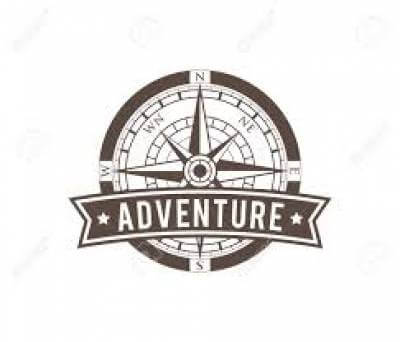Langtang Gosainkunda Lake Trek
The Langtang Gosainkunda Lake Trek is a popular trekking route in Nepal that combines the stunning beauty of the Langtang Valley with the sacred lakes of Gosainkunda. This trek offers a unique opportunity to explore the diverse landscapes, rich culture, and pristine lakes of the Langtang region.
The trek usually starts from Syabrubesi, a small village located around 7-8 hours' drive from Kathmandu. From there, you will gradually ascend through lush forests, terraced fields, and traditional Tamang villages, experiencing their warm hospitality and unique way of life.
As you trek deeper into the Langtang Valley, you will be rewarded with panoramic views of snow-capped mountains, including Langtang Lirung (7,234m) and Ganesh Himal (7,422m). The valley is also home to diverse flora and fauna, making it a haven for nature lovers and birdwatchers.
One of the highlights of the Langtang Gosainkunda Lake Trek is the sacred lakes of Gosainkunda. These high-altitude lakes are considered holy by both Hindus and Buddhists and are visited by thousands of pilgrims during the full moon festival of Janai Purnima in August. The trek takes you to the main lake, Gosainkunda (4,380m), as well as other lakes in the area, such as Saraswati Kunda and Bhairav Kunda.
The trekking route continues to Lauribina La Pass (4,609m), where you can enjoy breathtaking views of the surrounding Himalayan peaks. From there, you will descend to the beautiful Helambu region, known for its picturesque landscapes, terraced fields, and charming villages.
The Langtang Gosainkunda Lake Trek is considered a moderate to challenging trek, suitable for trekkers with a good level of fitness and some previous trekking experience. The trek involves walking for 5-6 hours a day on varied terrain, including steep ascents and descents.
Accommodation during the trek is in tea houses or lodges, offering basic but comfortable rooms with shared bathrooms. The tea houses also provide meals, including traditional Nepali and international dishes, to refuel you for the trekking journey.
The best time to do the Langtang Gosainkunda Lake Trek is during the spring (March to May) and autumn (September to November) seasons. These months offer stable weather conditions, clear skies, and great visibility. However, the trek can be done throughout the year, except during the monsoon season (June to August) when the trails may be muddy and slippery.
It is recommended to hire a licensed guide and porter for the Langtang Gosainkunda Lake Trek. A guide can provide valuable information about the local culture, history, and geography, as well as assist with navigation and communication. A porter can help carry your heavy backpack, allowing you to trek with less weight and fatigue.
Overall, the Langtang Gosainkunda Lake Trek is a rewarding adventure that combines natural beauty, cultural immersion, and spiritual exploration. It offers a unique opportunity to experience the best of the Langtang region and create lifelong memories.
ITINERARY
Day 1 : Arrival at Kathmandu transfer to hotel.
Upon arrival at Kathmandu Airport you will be met by Sherpa Expedition and Trekking staff and transported to your hotel, followed by a short briefing concerning your trek.
Day 2 : Drive from Kathmandu to Syabru Besi (1,460m) Duration: 6-7 hours.
Leaving Kathmandu we set off on a seven-hour journey by road heading to the Langtang Valley. As the road climbs out of Kathmandu Valley we will be afforded views of the Annapurna Mountains in the west and directly ahead to Manaslu, Ganesh Himal, and the numerous peaks in the Langtang region. We first come to Trishuli Village and then continue climbing until we reach Dhunche and enter the Langtang National Park. After leaving Dhunche we drive for another hour downhill until we reach Syabru Besi where we stay the night.
Day 3 : Trek from Syabru Besi to Lama Hotel (2,470m) Duration: 5-6 hours.
The trail today takes us across the Bhote Kosi (meaning Tibet River) which flows from Tibet. The trail then climbs through sub-tropical forest and then joins the trail coming from Syabru Besi, and then ascends through oak and rhododendron forests. On the trail it is very likely we will encounter Langur monkeys in the treetops. The trail continues up a steep incline before reaching the Lama Hotel where we stay the night.
Day 4 : Trek from Lama Hotel to Langtang Village (3,400m) Duration: 5-6 hours.
Lama Hotel to Langtang. Today is your second-day trek. You feel much better than the last day because your body adjusting to the environment and the trail also more open. You can see the Langtang Lirung at the first time from Ghode Tabala. The trail from Lama Hotel to Ghode Tabala should walk through the Rhododendron forest. There is a national park office as well. Today you trek an hour approximately four to five then you reach in Langtang Village at 3450m, then stay overnight at hotel
Day 5 : Trek from Langtang village to Kyanjin Gompa (3,860m) Duration: 4-5 hours.
Langtang Village to Kyanjin Gompa. The trek today is a very easy, short day trek, it just takes about three hours, but you should be very slow because you are gaining more altitude. The trail very nice and gentle, the valley more open, can enjoy more mountains then reach in Kyanjin Gompa at3800m in the afternoon. After lunch, if you would like to walk more, you can hike to Kyanjin RI and back to the hotel and stay overnight.
Day 6 : Acclimatization day at Kyanjin Gompa.
Today is your rest day. A rest day does not mean sleep all the time. You should explore the day looking around, walk a couple of hours. The plan today go to Cherko RI and enjoy the mountain views from there if you are fine and can manage. It takes five to six hours to go and back. The best view place in Langtang Region. After enjoying the views, back to the hotel and stay overnight there.
Day 7 : Trek from Kyanjin Gompa to Rimche (2,510m) Duration: 5-6 hours.
Kyanjin Gompa to Rimche. The trek today, you should back the same way. It takes about a six-hour walk. Rimche is 20 minutes further from the Lama Hotel and stays overnight there.
Day 8 : Trek from Rimche to Thulo Syabru(2,120m) Duration: 5-6 hours.
Rimche to Thulo Syabru. You should follow the same trail descend until to the Pahiro then separate the trail to Thulo Syabru. The trail now ascends about one and a half hour, then drop down, cross the bridge, then ascend again to reach the Thulo Syabru, bigger Tamang village and stay overnight there.
Day 9 : Trek from Thulo Syabru to Chandanbari (3,250m) Duration: 5-6 hours.
Thulo Syabru to Chandanbari. The trail today climb up about three hours, then gradual another two hours. It takes about a five-hour walk. You should walk through the forest. The mountain views and the scenery both are spectacular. The Chandanbari is very famous for the cheese factory. You can taste the fresh cheese there and stay overnight at hotel.
Day 10 : Trek from Chandanbari to Gosainkund (4,380m) Duration: 5-6 hours.
Chandanbari to Gosainkunda. Today you should ascend a lot. You feel more tired than the last few days because of gaining more altitude. The trail more gradual but you should climb long hours. You can enjoy the mountain views from Lauribinayak pass. You can observe Langtang Lirung, Ganesh Himal, Annapurna mountain and several peaks around there. Today you should walk five to six hours to reach Gosainkunda at 4100m. The views from the hotel very nice. You can look around the lakes and enjoy it, then stay overnight at a hotel.
Day 11 : Trek from Gosainkund to Ghopte (3,440m) Duration: 6-7 hours.
Gosainkund to Ghopte. Today you should start the trek earlier than usual because you should do the Gosainkund Pass at 4610 m. It takes about two to three hours walk to get to the top. After you are getting success to the Gosainkund Pass, you can take some photographs for the good memory, then back down to the other side of the Helambu trekking trail. The train after the pass narrow and rocks. You should be careful while you are walking. Near to the Ghopte area, an Australian trekker got lost in 1991 and was not found for 43 days. Nearby that place where a Thai International Air Bus became lost in 1992 and crashed into a mountain. Today you should walk approximately six hours, then reach to Ghopte at 3440m and stay overnight there.
Day 12 : Trek from Ghopte to Kutumsang (2,470m) Duration: 6-7 hours.
Ghopte to Kutumsang. Today you should walk for about six hours. You should ascend about three hours to reach to Thadepati at 3690m. This is a very nice viewpoint for the mountains and scenery of the Helambu area. After enjoying the views, you should descend all the way to Kutumsang and stay overnight there.
Day 13 : Trek from Kutumsang to Chisapani (2,175m) Duration: 6-7 hours.
Kutumsang to Chisapani. Today the trail both up and down. You can enjoy the scenery and the countryside. You can pass so many villages, different ethnic groups are inhabited there. Today you should walk for about six to seven hours. Finally, you arrive in Chisopani. Chisopani is a very nice place for mountain views. Especially morning views and the sunrise are the best from this place then stay overnight there.
Day 14 : Trek from Chisapani to Sundarijal then drive to Kathmandu(1,350m) Duration: 5-6 hours.
Chisapani to Kathmandu. Today you have a very nice and easy day. It takes about four hours walk to get to Sundarijal. In the beginning, you should ascend up to the Shivapuri then descend all the way until to Sundarijal. You can enter the Shivapuri Wild Life Protected Area, can enjoy the scenery and can see wild animals, birds, and other spices. You can catch the bus from Sundarijal to Kathmandu. It takes about an hour, then transfers to the hotel.
Day 15 : Final Departure day.
Depart for Home. Our driver and Sherpa Expedition and Trekking staff will come to your hotel for a final departure to the International Airport. We wish you have a nice and safe journey back home.
SERVICES
Costs Included In Your Package
- Airport picks up and transports by private Car/Jeep.
- Two Night's hotel accommodation In Kathmandu with breakfast (3 star Hotel)
- Transportation from Kathmandu to Syafrubesi via public bus.
- Sundarijal to Kathmandu by private car/Jeep
- All standard meals (lunch, dinners & breakfast) during the trek.
- Best possible teahouses, lodge accommodation (generally twin share rooms)- during the trek
- Government licensed holder English speaking trek leader (10 or more trekkers an assistant guide) and porter to help carry your luggage.
- Strong, helpful Sherpa porters with proper safety equipment and walking equipment, his salary, food, accommodation, and insurance (one porter for two people).
- Guides and porters provided by Sherpa Trekking & Expeditions, including their meals, insurance, salary, lodging, transportation, and other necessary equipment
- All the required permits and paper works( Langtang National park permit, Shivapuri Nagarjun Permit fee, TIMS etc)
- All government, local taxes, and official expenses
- Assistance in arranging rescue operations in case of complicated health conditions such as altitude sickness (funded by travel insurance)
- Souvenir - Sherpa Trekking & Expeditions t-shirt
- Use of sleeping bag, down jacket, duffel bag, and walking poles (if you don’t have your own, to be returned after the trip is completed).
- Sherpa Expedition and Trekking’s certificate of appreciation & completion after the successful trek
- Oxygen meter to check your pulse and oxygen saturation and heart rate twice daily (Very useful to check Altitude Mountain Sickness(AMS) symptoms) which will ensure your health during the trek.
Costs Exclude
- International airfares
- Nepal entry visa fee (easy to obtain the visa on arrival at Tribhuvan International Airport – Kathmandu). $30 USD for 15-day, $50 USD for 30 Days, and $125 USD for 90 Days visa.
- Extra night’s accommodation in Kathmandu due to early arrival or late departure or early return from the trek.
- All the alcoholic and nonalcoholic, soup, tea, coffee, hot chocolate, cocoa, mineral water, extra food, cold and hot drinks on trek ( i.e. those you choose to purchase along the way and during evenings in the tea houses)
- All desserts & sweet things like chocolate, cake, pie, pudding.
- Hot shower and battery charging at the tea houses.
- Lunch and dinner in Kathmandu
- Personal clothing and gear
- Travel insurance which has to cover emergency high-altitude rescue and evacuation (compulsory)
- Tips for guide and porters (recommended in our culture – and well deserved too!)
- Additional costs or delays caused by events beyond our control, for example, landslides, severe weather conditions, itinerary modification due to safety concerns, illness, change of government policies & strikes.
- All the costs and expenses which are not listed in "costs include" will be counted as exclusions.
EQUIPMENTS
The following information will give you some idea about what you need to bring for the trek. It is important you do not forget the essential items, as this will determine your comfort and safety on the trek. Equally important is that you do not burden yourself with unnecessary equipment on the trek.
- Sleeping Bag (Sherpa Teams will provide but need to return after completing the trip)
- Duffel Bag (Sherpa Teams will provide but need to return after completing the trip)
- Fleece jacket or pullover
- Waterproof windbreaker or windcheater
- Thermal underclothes
- Rain poncho
- Down jacket (Sherpa Teams will provide but need to return after completing the trip)
- Fleece or wool trousers
- Sun hat or scarf
- Trekking pants (two pairs)
- Mittens or woolen gloves
- Hiking socks (several pairs)
- Moisture-wicking shirts, including t-shirts
- Trekking shoes or boots with spare laces
- Flip-flops or sandals for relaxing in the evenings
- Underwear (several pairs)
- Swimsuit or swimming costume
- Sunglasses
- Headlamp or flashlight/torch
- Sleeping bag (Sherpa Teams can provide this for you)
- Trekking poles (if desired)
- Hiking backpack with a capacity of at least 40 liters
- Small lock for your backpack
- Reusable water bottles (at least two liters)
- Water purification tablets or filtration device
- Wash towel
- Basic first aid kit
Toiletries (tissues, toilet paper, moisturizer, lip balm, sunscreen, sanitary pads, hand sanitizer, nail clippers, a small mirror, toothbrush, toothpaste, glasses, contacts, etc.)
GOOD TO KNOW
Accommodation
You will be accommodated in 3-star hotels in Kathmandu. During the trek, we will be staying at lodges/ teahouses. You may find comfortable and better quality teahouses - having attached bathroom at lower levels- until you reach higher elevations, where the accommodation is more basic with bare necessities.
Meals during the trek
In Kathmandu, your hotel includes breakfast, whereas all meals (breakfast, lunch, and dinner) will be provided during the trek. A staple food of the Langtang and Gosainkunda regions is potatoes, oats, buckwheat, Sherpa stew, and Tibetan bread. Sherpa’s’ started farming potatoes when the first seeds were introduced to the region in the early 90s. There is a limited choice of food at higher elevations and except many potato dishes. Potatoes are high in carbohydrates – an excellent source of energy needed at high altitudes.
Transportation
We use a private car for sightseeing and for the airport to hotel pick and drop off. We use public transportation or local buses during the trek.
Physical fitness
This can be a challenging trek where you often have to walk 6-7 hours a day. You don’t need past experience of hiking or trekking but if you have done any kind of trekking activities then it is always a plus! We have met people from all walks of life, shapes and sizes who have completed the trek. The only difficult part is when altitude sickness strikes and the effect that it can have on your body. Before leaving for Nepal it is good if you can prepare yourself physically by increasing your stamina and oxygen intake.
Remember – The better prepared – the more enjoyable your trek!
MAP
PHOTOS/Videos
Departures
Select a departure month
Fill out the form below and a Travel Expert will reach out to create your perfect tour.
FAQS
How long does the Langtang Gosainkunda Lake Trek take?
The Langtang Gosainkunda Lake Trek usually takes around 10-14 days, depending on the pace of the trek and the itinerary chosen. However, the duration can be customized according to your preferences.
Is the Langtang Gosainkunda Lake Trek difficult?
The Langtang Gosainkunda Lake Trek is considered a moderate to challenging trek. It involves walking for 5-6 hours a day on varied terrain, including steep ascents and descents. Some sections of the trek may be physically demanding, especially as you reach higher altitudes. Prior trekking experience and a good level of fitness are recommended.
What is the best time to do the Langtang Gosainkunda Lake Trek?
The best time to do the Langtang Gosainkunda Lake Trek is during the spring (March to May) and autumn (September to November) seasons. These months offer stable weather conditions, clear skies, and great visibility. The weather is generally favorable for trekking and the views of the mountains are spectacular. However, the trek can be done throughout the year, except during the monsoon season (June to August) when the trails may be muddy and slippery.
Do I need a permit for the Langtang Gosainkunda Lake Trek?
Yes, you need to obtain a Langtang National Park Entry Permit and a TIMS (Trekkers' Information Management System) card to do the Langtang Gosainkunda Lake Trek. These permits can be obtained in Kathmandu or at the park entry checkpoint in Syabrubesi.
What is the accommodation like during the trek?
The accommodation during the Langtang Gosainkunda Lake Trek is typically in tea houses or lodges. These are basic but comfortable guesthouses that offer simple rooms with shared bathrooms. Some tea houses also provide hot showers for an additional cost. It is advisable to carry a sleeping bag for added comfort and warmth.
How do I get to the starting point of the trek?
The starting point of the Langtang Gosainkunda Lake Trek is usually Syabrubesi, which is around a 7-8 hour drive from Kathmandu. You can hire a private vehicle or take a public bus from Kathmandu to reach Syabrubesi. Another option is to take a 30-minute domestic flight from Kathmandu to the nearest airport in Dhunche and then drive to Syabrubesi.
Is it necessary to hire a guide and porter for the trek?
While it is not mandatory to hire a guide and porter for the Langtang Gosainkunda Lake Trek, it is highly recommended for a more enjoyable and safe experience. A guide can provide valuable information about the local culture, history, and geography, as well as assist with navigation and communication. A porter can help carry your heavy backpack, allowing you to trek with less weight and fatigue.
What should I pack for the Langtang Gosainkunda Lake Trek?
Some essential items to pack for the Langtang Gosainkunda Lake Trek include sturdy trekking boots, warm clothing (including a down jacket and thermals), a good quality sleeping bag, a backpack, trekking poles, a hat, sunglasses, sunscreen, a water bottle, and personal medication. It is also advisable to pack some snacks and water purification tablets.
Is it safe to trek in the Langtang region?
Yes, trekking in the Langtang region, including the Langtang Gosainkunda Lake Trek, is generally safe. However, it is always recommended to trek with a licensed guide, follow their instructions, and be cautious of your surroundings. It is also advisable to have travel insurance that covers trekking activities and to stay updated on weather conditions and potential risks.
Can I trek independently or do I need to join a group?
You have the option to trek independently or join a group for the Langtang Gosainkunda Lake Trek. Trekking independently allows for more flexibility in terms of itinerary and pace. However, joining a group trek provides the advantage of having a guide and porter, as well as the opportunity to meet and trek with like-minded individuals. The choice ultimately depends on your personal preferences and level of comfort.
Latest Traveller’s Reviews
Travel experiences of our clients who recently returned from their trips.
100%
Based On 28 Reviews
Harinder Singh
Australia
September 11, 2024
Excellent Langtang, Gosainkunda, and Helambu Trek
Our trek across Langtang Valley, Gosainkunda, and Helambu with Sherpa Expedition was excellent. The team’s expertise and careful planning were evident throughout the journey. The guide offered fascinating insights into the local culture and environment, enhancing our experience. The porters were hardworking and made sure all our needs were met. Sherpa Expedition’s dedication to providing a high-quality and safe trekking experience ensured that our adventure was both smooth and memorable. For a well-organized trek through these stunning areas, Sherpa Expedition is a fantastic choice.
Kasimir Radziejewski
Norway
August 27, 2024
Memorable Adventure
The Langtang Valley, Gosainkunda, and Helambu trek organized by Sherpa Expedition was a memorable adventure. Their team’s dedication to delivering an exceptional experience was evident throughout. Our guide’s in-depth knowledge and enthusiastic approach made the trek both educational and enjoyable. The porters were efficient and supportive, handling our gear with care. Sherpa Expedition’s attention to detail and commitment to ensuring our comfort and safety were greatly appreciated. For a well-planned and unforgettable trek across these diverse regions, Sherpa Expedition is highly recommended.
Urszula Morańda
Canada
August 2, 2024
Top-Notch Trekking
Our Langtang Valley, Gosainkunda, and Helambu trek with Sherpa Expedition was top-notch. The team’s organization and professionalism were evident at every stage. Our guide’s expertise and engaging storytelling made the trek informative and enjoyable, while the porters worked tirelessly to ensure our comfort. Sherpa Expedition’s meticulous planning and focus on safety and client satisfaction made this multi-region trek a memorable experience. For a well-executed and enriching adventure through Langtang, Gosainkunda, and Helambu, Sherpa Expedition is an excellent choice.
People Considering This Package Right Now Check availability
























